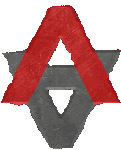Platforms Android, IOS
Developer Niantic Publisher The Pokémon Company
Genre Augmented Reality Platform Played Android LG G2
Pokémon Go exploded in a way no one saw coming. Normally, the launch of a game with server issues is a death sentence. However, a rocky launch and reported world wide server issues aside, it would seem that the more this app didn’t work, the more people needed it. Like a parent trying desperately to find a sold out toy at Christmas time. Server issues or not, the app is here in force. So let’s get started.
Pokémon Go is rooted in the concept that it augments your world. Leveraging Google Maps on your phone, you are inserted into a digital plane of existence, populated with Pokémon just waiting to be caught. While good in theory, this poses as many problems as it does successes. I cannot count the number of times Pokémon Go has frozen while I attempted to catch a Pokémon. So often did this occur, that I eventually turned off the Augmented Reality function all together in place of an animated background. I quickly found that the App responds far better to its animated background as opposed to placing a Pokémon on your street or on your desk at work. (Which I’m sure you’ve neeever done.)

Live at dinner
When you do attempt to catch a Pokémon using the Augmented function, the quality of your camera drops exponentially. My smartphone has a 13 Mega Pixel camera. But for some odd reason, the second Pokémon Go uses my camera, the quality drops so much that I don’t even bother taking them anymore.
The GPS tracking system is another planned upgrade from the Niantic team because, to speak frankly, it’s a hot mess. Fire up the app and you’ll notice a bar in the bottom right hand corner of the screen. Several guides will suggest you to spin until it flashes green, and then follow a pattern of movements. I’ve backtracked, retraced my steps, and worked in a full grid system to attempt to catch a character, only for it to disappear altogether. At other times I am almost flooded with low level Pokémon.
The quest to “catch em’ all” has been a staple in the Pokémon franchise since its inception from Satoshi Tajiri in 1995. That methodology is clear, present, and one of the most gratifying, albeit frustrating, elements of Pokémon GO. Currently, the original 150 Pokémon characters are yours to track down. While hunting and tracking all of these Pokémon seems daunting, the hunt is the biggest thing that keeps drawing people back into the game as much as making them want to throw their phone in the trash and never take another selfie.
While the duplicate characters may be frustrating at first, they are a necessity to evolving your Pokémon. Lower level Pokémon will be transferred back to the professor for Candies needed to evolve your higher level Pokémon. It is those evolved and high level CP characters you will take to the Gym’s for battle.

Until you reach level 5, your goal is to catch, train, and evolve your Pokémon. Once you hit level 5, you’ll be asked to pick one of the three times. Red (Valor), Blue (Mystic) or Yellow (Instinct). For the most part, the team dynamic does nothing more than signify what team you’ll fight for or against. For now, the gym serves a pretty basic purpose. Control.
Your local Gym will signify a color, with the top CP Pokémon resting at its peak. If your team controls the gym, you can add your Pokémon to the roster with the intent of defending it. If already full, you can “train” your Pokémon by battling against theirs to raise the prestige and level. Higher level, higher amount of Pokémon that can be assigned by that team. In the Item Shop, you will see a Shield in the top right hand corner. The number will raise depending on how many Pokémon you’ve assigned to a gym. Each Pokémon assigned will be removed from your roster until they are defeated, and then returned to you.
If you decide to take on a gym that isn’t assigned to you, then you’ll have a few different options. Some gyms allow for multiple Pokémon to be selected. Some gyms even allow for team combat. The combat system is a series of Taps, Swipes, and Holds to attack, dodge, or use your special abilities. You’ll essentially run a gauntlet of Pokémon until you defeat them all. Much like other Pokémon games, the types of Pokémon are important to success. Fire vs. Grass. Lightening vs. Air..etc.

Shop List: Analog Addiction
As you can see in the picture we made, items cost coins, and coins cost money. You can earn coins by placing a Pokémon at a Gym, but the yield is low and hard to do if you live away from a downtown area. All items can be earned or found through PokéStops, especially ones with Lure’s attached. However, for higher level Pokémon, you’ll burn Pokéball’s quickly, and the majority of people I have spoken with have spent money on it already.
Pokémon GO is an unfinished, poorly executed game. I can’t even recommend you download and see for yourself because I’m not sure the servers will be active when you get it installed. Or stay up long enough for you to try it. While the social and fitness component to Pokémon GO is unrivaled, and the potential for long journeys and fun with friends is prominent. The inadequate tutorial, God awful server support, and clunky operating system makes this a game that causes more frustration than fun.
The Good
- Excellent Social Activity
- Fun to hunt with friends
- Encourages fitness
- Vast variety of Pokémon
The Bad
- Horrible Server Support
- Constant bugs and glitches
- Terrible explanation system
- Bad GPS tracking system
- Advertised game not even available yet
- No Win/Loss Ratio for Gym battles




